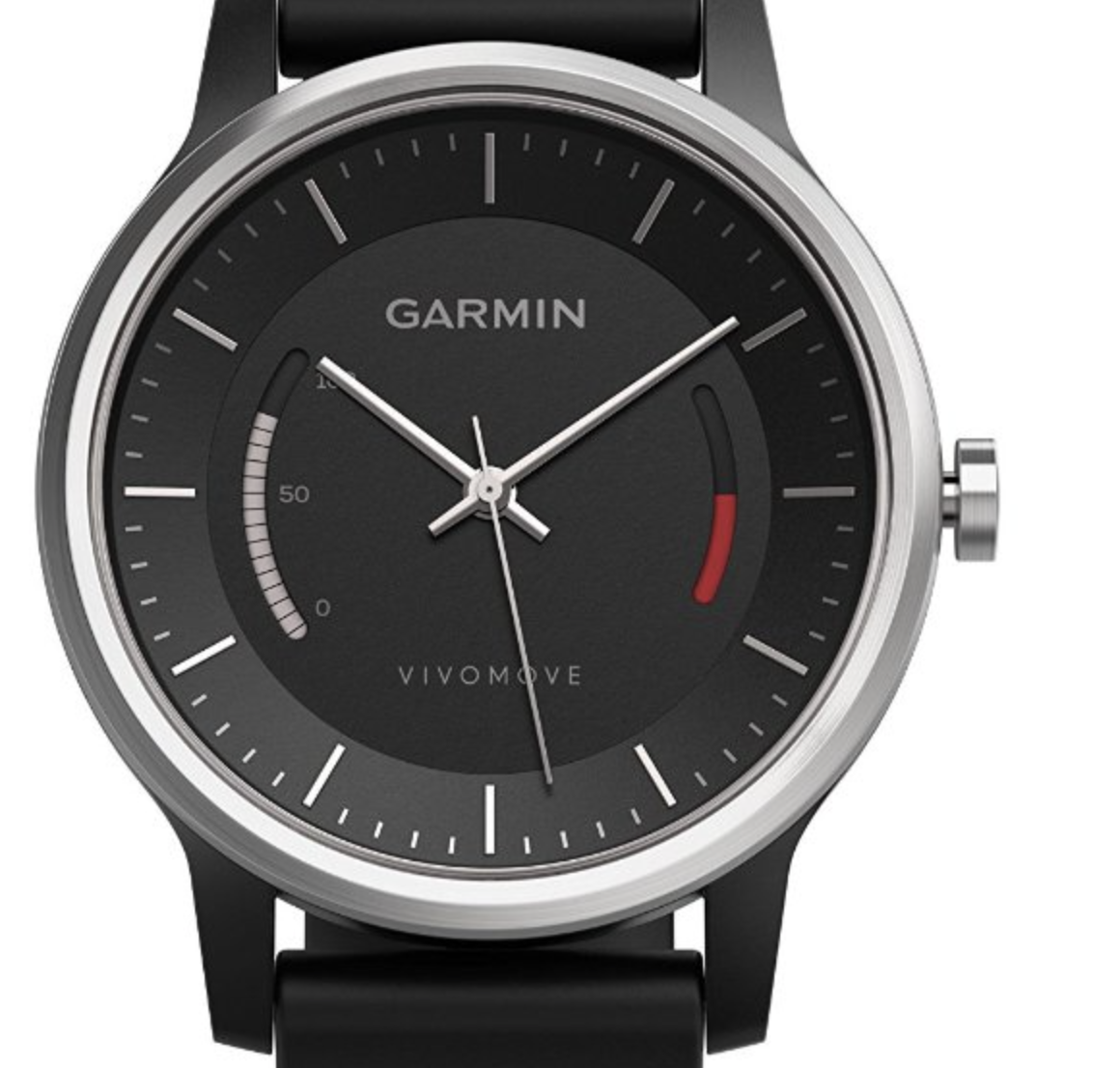At Baselworld this year an interesting shift in the world of watches has become clear. Hybrid smart watches — watches analog by design but include sensors for basic fitness and movement tracking. These watches keep their iconic design but add some new features to display movement. A good example is the latest release from Garmin called the Vivomove which displays steps and move goal in bars on the side of the analog display.
These analog watches are being positioned as the best of both worlds. Keeping the timeless design of analog for customers who are not ready for true “smart watches” and adding the digital benefits of fitness and health tracking. I believe we will see more and more experimentation with hybrid smart watches, perhaps even from Apple as it becomes possible to have a glass digital screen overlay an analog design. This would let you have your analog watch design but have the glass display go full digital for many of the smart watch features of the Apple Watch. This technology is demonstrated today but years away from being commercially affordably in a small form factor. Examples of this hybrid glass and digital display are mostly seen in high end retail today like this.
Certainly, one of the more interesting technologies to come to all types of products that use glass once the full digital display can be embedded into the glass itself.
The examples set by these hybrid smart watches are providing us a bridge to the future for a large percentage of the population not ready to go full digital in every aspect of their life. This hybrid approach, mixing analog and digital, is something I think we will see move to all forms of smart devices, not just smart watches. In particular, all things we lable IoT.
It really is only a matter of time before many of our common objects become smart but it is likely to happen without them going fully digital. When you buy a new crockpot, it may be IoT-connected but still have an analog display and analog buttons. Similar with your next coffee pot or refridgerator or oven. There is a great deal of value in having an appliance IoT-connected for things like diagnostics, remote accessibility, remote monitor and control, and more. But adding smart to many of these objects can still happen in a hybrid fashion, giving folks the same familiar experience with analog products but adding the benefits and features of digital.
This approach makes sense, given we are in a period of transition from an analog to a digital world. Generations grew up analog and will not immediately adopt full digital solutions for many of the every day objects they know and love. There is no question those generations who grew up digital will adopt the pure digital smart devices as they buy new products in the future. What will be interesting to see is how the non-digital generations start to embrace more digital solutions once they see the value. For example, with the hybrid smart watches, it will be interesting to see if the demographic that buys these starts to get acquainted with and appreciate the digtal functions and then move to more digtal smart watches in the future, once they see the value.
The hybrid approach makes sense for the world we live in today and we will see these hybrid solutions set the stage for the pure digital ones in the future. These solutions are the right baby steps to take to bring the value of digital technology broadly to groups of people who are a bit more resistant to change and prefer familiarity. This is a great balance and I believe we will see a lot more experimentation in the coming years.


